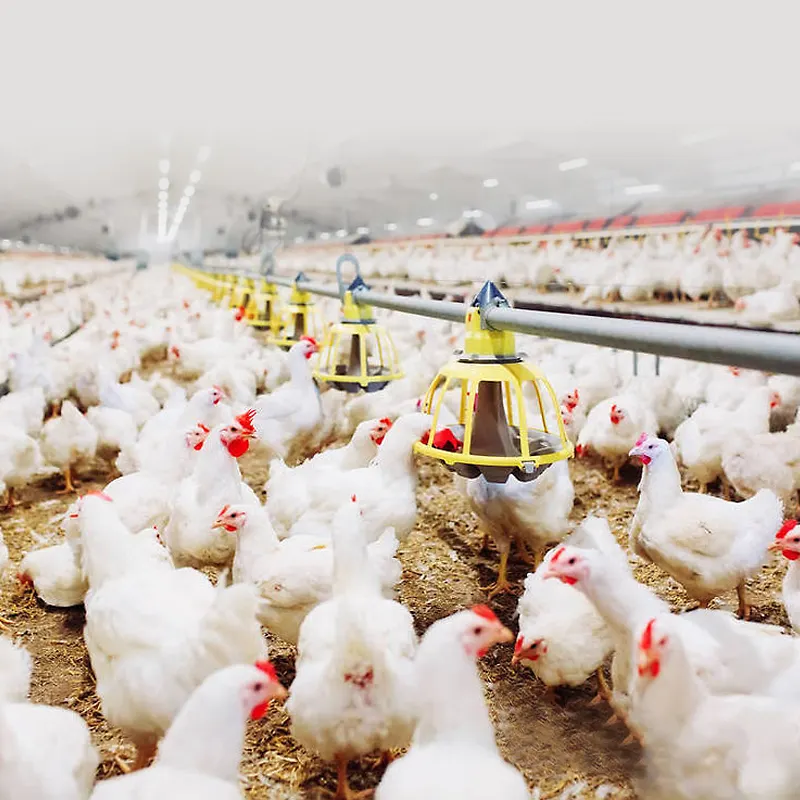Enhancing Efficiency and Cleanliness in Poultry Nutrition
In commercial poultry farming, reducing feed waste is both an economic necessity and a sustainability strategy. With the rising demand for chicken meat and eggs, optimizing feeding processes can yield substantial cost savings and minimize environmental impact. One of the most influential developments in this area has been the advancement of chicken feeding systems. These systems are designed not only to deliver consistent and adequate feed to poultry but also to drastically reduce spillage, contamination, and overfeeding, which are common problems in traditional methods.
Adopting well-engineered chicken feeding systems can play a vital role in ensuring the health of the flock while reducing operational costs and improving overall productivity. By understanding how these systems function and what sets modern designs apart, poultry farmers can make more informed decisions that align with both business goals and animal welfare standards.
Key Components of Efficient Chicken Feeding Systems
Automated Feed Distribution
Modern chicken feeding systems often include automated mechanisms that distribute feed evenly across the housing environment. These systems are usually programmable, allowing farmers to control the timing, quantity, and frequency of feed dispensation. With automation, feed is less likely to be wasted due to overfilling or human error. Additionally, uniform distribution ensures all chickens have equal access to feed, which reduces competition and aggression among birds.
The automated nature of these chicken feeding systems also means less manual labor, allowing farm workers to focus on other essential tasks. Efficiency increases not only in feed usage but also in time and manpower management.
Feed Flow Control and Adjustment
Precision is a hallmark of modern chicken feeding systems. Adjustable flow control valves and regulators allow the fine-tuning of feed output to match the specific needs of different poultry categories—whether layers, broilers, or breeders. By tailoring feed delivery, farmers can prevent excessive accumulation in feeding trays, which commonly leads to spillage and waste.
These features are particularly beneficial when feed prices fluctuate, as they help maintain consistent cost-per-bird ratios and minimize waste across the board. Feed flow adjustment also helps maintain hygienic conditions, as leftover feed can attract pests or foster bacterial growth.
Design Innovations for Waste Reduction
Anti-Spill Trough and Pan Designs
One of the standout features of contemporary chicken feeding systems is the integration of anti-spill technologies. Feeding pans and troughs are now specifically engineered to reduce spillage by minimizing the surface area exposed to active feeding. Deeper pan shapes, curved edges, and partitioned spaces guide the chicken's feeding behavior, thereby minimizing aggressive pecking and feed flinging.
Such designs ensure that more of the feed ends up consumed rather than scattered on the ground, where it would be trampled or soiled. These seemingly minor design tweaks contribute significantly to overall feed efficiency.
Height and Accessibility Adjustments
Adaptability is another key benefit. Chicken feeding systems today often include adjustable heights and angles, enabling them to accommodate the physical size and growth stages of different birds. A feeding system positioned too low might invite unnecessary scratching and spillage, while one that’s too high can deter access.
By making systems customizable, farmers can maintain an optimal feeding posture for their flocks, enhancing feed uptake and minimizing waste. Systems can also be raised during cleaning procedures to improve biosecurity and sanitation.
Sustainability and Economic Impact
Lower Feed-to-Egg or Feed-to-Meat Ratio
Well-designed chicken feeding systems help improve the feed conversion ratio (FCR), which is the amount of feed required to produce a unit of egg or meat. Lowering this ratio means achieving more output from the same or lesser input, leading to reduced operational costs and less environmental burden.
A lower FCR contributes to sustainability by minimizing the need for additional feed production, which in turn reduces agricultural land use, water consumption, and carbon emissions associated with feed transport and processing.
Waste Reduction as a Cost-Saving Strategy
Minimizing feed waste directly impacts the bottom line. Since feed costs typically account for more than 60% of the total production cost in poultry farming, even a small improvement in feeding efficiency can lead to significant financial gains. Modern chicken feeding systems make it easier to monitor feed usage patterns, detect anomalies, and adjust strategies accordingly.
Investments in high-efficiency systems often pay off through decreased waste, lower feed bills, and improved poultry growth rates. It becomes a win-win for both profitability and environmental stewardship.

Integration with Smart Farm Technology
Data Monitoring and Real-Time Feedback
Chicken feeding systems are increasingly being integrated with smart farm technologies that provide real-time monitoring of feed consumption, bird behavior, and system performance. These digital tools enable farmers to gather actionable insights, helping them make data-driven decisions that further enhance feeding precision and waste control.
Smart sensors and cloud-based dashboards allow remote tracking and adjustment of feeding parameters, which is especially useful for large-scale operations. Alerts can also notify farmers of system malfunctions or deviations from expected consumption patterns.
Compatibility with Broader Automation Systems
Feeding systems that sync with climate control, lighting, and water supply mechanisms create a more holistic and synchronized poultry management environment. When these systems work in tandem, the health and productivity of the flock improve, and waste—both in feed and other resources—is further minimized.
This level of automation reduces human intervention, lowers the risk of error, and ensures consistency in poultry care. Integration across platforms offers a forward-thinking approach to sustainable farming.
Customization and Scalability
Solutions for Various Farm Sizes
Whether managing a small backyard flock or a large industrial facility, there are chicken feeding systems available to match any scale. Scalable designs ensure that even small investments can yield measurable improvements, while large operations benefit from comprehensive systems that deliver efficiency across multiple poultry houses.
Scalability also means that farmers can start small and expand their systems as their operations grow. This flexibility makes modern feeding systems a practical solution for operations at all levels.
Tailored Systems for Bird Types
Different breeds and purposes—like meat production or egg-laying—require unique nutritional approaches and feeding behaviors. Chicken feeding systems can be tailored with specific pan sizes, flow rates, and automation levels to suit these varied needs.
This level of customization allows for more efficient use of resources, better health outcomes for the birds, and a more productive farming operation overall.
FAQ
What types of chicken feeding systems are best for reducing waste?
Automatic pan feeders with anti-spill designs and adjustable flow controls are among the most effective for minimizing feed waste. Their consistent delivery and efficient design help ensure more feed is consumed rather than lost.
How do chicken feeding systems affect flock health?
By providing consistent and clean access to feed, these systems reduce competition, lower stress, and support optimal growth and productivity, all of which contribute to healthier flocks.
Are chicken feeding systems suitable for small farms?
Yes, there are many scalable and affordable feeding systems tailored to small-scale operations. These systems can be upgraded or expanded as the farm grows.
Do feeding systems require regular maintenance?
While most modern systems are designed for durability, regular cleaning and occasional inspections are recommended to maintain peak performance and biosecurity standards.

